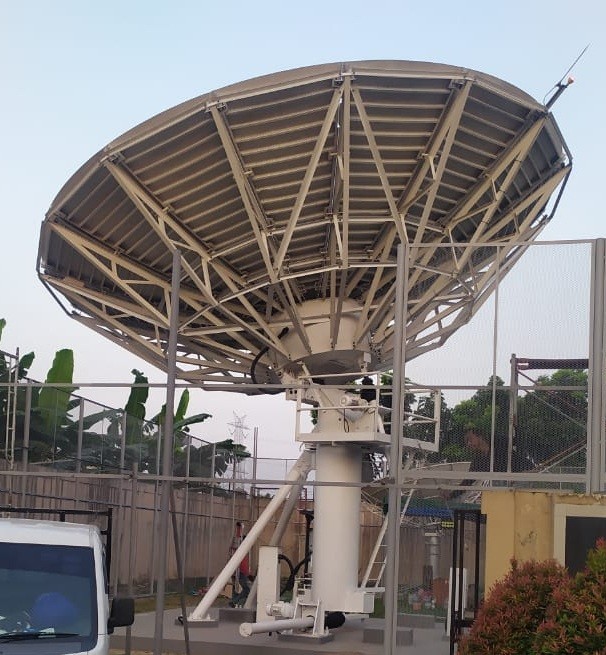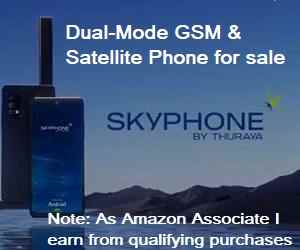Satellite Internet Forum.
Welcome, Guest. Forum rules.To search this site click here > SATSIG search
| Home Login Register |
| › Recent Posts |
| 1 | VSAT technology and installation / Hub and VSAT satellite equipment for sale and wanted / For sale: 4.5M Receive antennas, also a motorised Vertex 7.3m Ku on: Dec 11th, 2025 at 1:23pm |
||
|
|
|||
| 2 | VSAT technology and installation / Satellite dish installations - pictures and descriptions / Analysis of the Relationship Between Low Earth Orbit (LEO) Satellites and XY-Axis Satellite Antennas on: Nov 26th, 2025 at 7:27am |
||
|
|
|||
1. Characteristics and Communication Requirements of LEO Satellites Low Earth Orbit (LEO) satellites operate at altitudes of 300–1500 km. Their key characteristics include: Short orbital period: approximately 1.5 hours per orbit; Limited coverage: each satellite covers a small area; High relative speed: approximately 7.8 km/s. These characteristics present the following challenges for ground station communications with LEO satellites: Short visibility window: a single LEO satellite is visible to a ground station for only about 10 minutes (e.g., a 500 km altitude satellite has a sub-satellite track covering ~3000 km), requiring rapid acquisition and tracking; Signal attenuation: although the distance to the ground is short (300–1500 km), a high-gain directional antenna is still required to ensure sufficient signal strength; High dynamic pointing requirements: the satellite’s high speed necessitates real-time beam adjustments to maintain alignment with the satellite. 2. Definition and Function of XY-Axis Satellite Antennas An XY-axis satellite antenna (also called a dual-axis antenna) adjusts the beam direction via azimuth (X-axis) and elevation (Y-axis) rotation. Its core function is dynamic satellite tracking, ensuring the beam always points to the target satellite, maintaining communication stability in high-dynamic scenarios. Compared with traditional single-axis antennas, XY-axis antennas offer: Higher pointing accuracy: independent azimuth and elevation adjustment to track satellite movement in the XY plane; Faster tracking speed: dual-axis linkage responds quickly to satellite position changes, meeting the needs of high-speed LEO satellites; Wider coverage: covers the entire satellite visibility window, avoiding blind spots of single-axis antennas. 3. Synergy Between LEO Satellites and XY-Axis Satellite Antennas XY-axis satellite antennas are key ground terminal devices for LEO satellite communication systems, designed specifically around LEO characteristics: Dynamic tracking: adjusts the azimuth (X-axis) for east-west direction and elevation (Y-axis) for north-south direction. Ground stations can calculate future azimuth and elevation sequences based on satellite ephemerides (e.g., TLE data) to drive the antenna along a pre-defined trajectory, ensuring the beam always points to the satellite. High-precision pointing: although LEO satellites are close, high-gain directional antennas are still required. XY-axis antennas use high-precision angle encoding (resolver precision ≤5”) and system error correction (e.g., gravity deformation, non-level base) to control pointing error within 10”, meeting Ka-band narrow beamwidth requirements and preventing signal degradation. Multi-satellite switching: LEO constellations (e.g., Starlink, OneWeb) require multiple satellites to provide continuous coverage. XY-axis antennas can quickly switch to the next satellite to ensure uninterrupted communication. Adaptation to LEO terminal requirements: user terminals require compactness and easy installation. XY-axis antennas can be integrated into vehicle-mounted, airborne, or fixed terminals. For example, OneWeb terminals adopt XY-axis phased array antennas that integrate satellite modem, LTE/3G, and Wi-Fi, providing convenient Internet access for users. 4. Key Technologies of XY-Axis Satellite Antennas To meet LEO satellites communication requirements, XY-axis antennas incorporate: High-precision angle encoding: resolver + RDC converter for pointing accuracy within 10”; System error correction: calibration of encoder zero position, gravity deformation, and non-orthogonality of azimuth/elevation axes; Composite control: PID algorithm + feedforward compensation to enhance dynamic tracking performance; Rapid acquisition and continuous tracking: “prediction + correction” closed-loop process for fast satellite signal acquisition and continuous tracking. 5. Optimization of Antesky 1.8 m / 2.4 m XY-Axis Parabolic Antenna Terminals Antesky 1.8 m and 2.4 m XY-axis parabolic antennas (fixed or transportable) are specially optimized in structure, control accuracy, and integration, fully meeting LEO terminal requirements: High-gain parabolic structure Lightweight, high-rigidity reflector with precision machining to ensure surface accuracy. Excellent beam performance across multiple bands (S, X, Ku, Ka) ensures high SNR and low BER during fast satellite passes. XY dual-axis drive system Azimuth (X-axis) + elevation (Y-axis) structure with high-speed servo motors and high-resolution resolvers, covering ±180° azimuth and 0–90° elevation, enabling blind-spot-free tracking. Modular and lightweight design Servo control units, RF front-end, and reflector modules are modular and combinable. Carbon-fiber reflectors + aluminum alloy support reduce overall weight by ~30% compared to traditional antennas, facilitating mobile terminals and field deployment. Intelligent control and remote operation High-performance ACU supports automatic acquisition, closed-loop tracking, and ephemeris-based predictive control. Multiple interfaces (Ethernet, serial, CAN) enable system integration, remote monitoring, status reporting, and self-diagnosis. Seamless multi-satellite switching Built-in satellite task management module calculates and switches to the next satellite before current signal fades, ensuring uninterrupted links and enhanced LEO satellites constellation service continuity.     Contact Us Thank you for your interest in our XY-axis parabolic satellite antennas,which is mainly used for tracking LEO satellites. For more information on products, technical specifications, or customized solutions, please contact: email: sales@antesky.com |
|||
| 3 | VSAT technology and installation / Dish pointing and alignment / Adjustment of Satellite Communication Antenna Polarization Angle on: Nov 26th, 2025 at 7:05am |
||
|
|
|||
Adjustment of Satellite Communication Antenna Polarization Angle: Linear Polarization and Circular Polarization How to Adjust Horizontal/Vertical Polarization Angles Adjustment Method for Linear-Polarization Signals: Ground Fixed Stations and SOTM Terminals For linear-polarized signals, technicians typically adjust the polarization angle after completing azimuth and elevation alignment. Once the antenna is accurately pointed, the polarization adjustment can begin. First, based on the satellite’s orbital position and the geographic coordinates of the ground antenna, the azimuth, elevation, and polarization angle are calculated. After obtaining the required polarization angle, the technician rotates the antenna feed—most commonly by rotating the LNB or the feed assembly—to ensure that the antenna’s receive/transmit polarization is properly aligned with the satellite’s incoming signal. This rotation aligns the ground antenna’s horizontal or vertical polarization with the satellite’s polarization orientation, minimizing cross-polarization interference and maximizing link performance. If the LNB bracket includes a polarization scale, the technician can simply rotate the LNB to the calculated theoretical polarization angle indicated on the scale. In addition, many modern fixed ground stations and SOTM antennas use automatic satellite acquisition. The antenna control unit (ACU) drives a motor to automatically rotate the feed (LNB) to the required theoretical polarization angle. There is also a manual polarization adjustment method for rotating the antenna feed (LNB). For example: Suppose a satellite transmits a horizontal-polarization signal at 12250.2 MHz and a vertical-polarization signal at 12250 MHz, and the ground antenna needs to align to the horizontal-polarization signal. Horizontal and vertical polarizations are orthogonal to each other in space. A well-designed antenna optimized for horizontal polarization has extremely low sensitivity to the vertical-polarized wave. When the antenna is perfectly aligned to horizontal polarization, its response to the vertical-polarized signal is theoretically zero. Therefore, the goal of polarization adjustment is to: Maximize the received power of the desired signal (12250.2 MHz, horizontal polarization). Minimize the power of the undesired orthogonal signal (12250 MHz, vertical polarization)—ideally making it disappear on the spectrum analyzer. When these conditions are met, the antenna is perfectly aligned with the horizontal-polarization signal while achieving maximum suppression of the orthogonal vertical-polarization signal. Manual Polarization Adjustment Procedure for Ground Station Antennas:  · Preparation and Calculation: Input the local location and satellite longitude, and calculate the theoretical polarization angle. · Equipment Connection and Setup: Properly connect the spectrum analyzer to the LNB output, and configure it to clearly observe the target signal as well as potential interference signals. · Azimuth and Elevation Adjustment: Adjust the antenna’s azimuth and elevation angles so that the antenna points toward the satellite. · Polarization Angle Adjustment: Rotate the antenna feed (LNB) to the theoretical polarization angle to initially acquire the signal. · Fine-Tuning Optimization (Core Loop): This is a precise and iterative process. By slightly rotating the LNB and monitoring the spectrum analyzer in real time, maximize the target signal power while minimizing the interference signal power to find the optimal peak point. During manual polarization adjustment, continuously monitor the power of the horizontally polarized signal (desired signal) and the orthogonal vertically polarized signal (interference), and calculate the cross-polarization discrimination (XPD).  How is the antenna polarization angle adjusted for circularly polarized signals? In fact, circularly polarized antennas do not require polarization angle adjustment; only the polarization state needs to be selected. Taking a Ka-band circularly polarized satellite communication portable station as an example: The antenna of the portable station has only two polarization states: 0° and 180°. The feed (OMT or waveguide switch) is designed to switch between RHCP (right-hand circular polarization) and LHCP (left-hand circular polarization) operation modes. This is a simple two-option configuration rather than a finely adjustable angle. During satellite acquisition, the user simply switches the feed between 0° and 180° manually; the antenna’s polarization does not require motorized servo adjustment. It is important to note that if the circular polarization sense is incorrect (for example, using an LHCP antenna to receive an RHCP signal), signal loss can reach 25–30 dB, causing the communication link to fail completely. During commissioning, only one of the two states (0° or 180°) can establish a valid connection, while the other will result in almost no signal.  📡 Why is the Antesky Flyaway Antenna Easier to Align Polarization in Engineering Applications? Antesky 1.0-2.4 Meter Flyaway antenna is engineered with practical field deployment requirements in mind, making polarization alignment significantly more efficient: • Precise Feed Polarization Scale Antesky 1.0-2.4 Meter Flyaway antenna: The linear-polarized feed is equipped with a ±90° mechanical scale, perfectly matching the engineering workflow described in this article—allowing technicians to “coarsely set the polarization angle according to the theoretical value.”  • Optional Motorized Polarization Adjustment (for Fixed or Transportable Stations) For users who need quicker setup, remote operation, or reliable repeatability (such as government, broadcast, emergency communications, or fixed ground stations), Antesky antenna can be configured with: A polarization adjustment motor Controller-based automatic positioning to the specified polarization angle  • 0°/180° Quick-Switch Circular Polarization Feed For circular-polarized configurations, the antenna uses a feed design that supports instant switching between RHCP and LHCP.  • High Cross-Polarization Isolation The feed system is optimized to provide excellent cross-polarization isolation, ensuring strong co-pol performance while suppressing unwanted cross-pol signals—matching the XPD requirements outlined earlier in the article. Conclusion This article systematically elaborates on the theoretical foundations and practical methods for adjusting the polarization angle of satellite communication antennas. By analyzing the characteristics of linear and circular polarization in different application scenarios, we recognize the critical impact of polarization alignment on communication quality. Linear polarization systems require precise polarization angle adjustment to ensure maximum signal reception and interference suppression, whereas circular polarization systems simplify the installation process through rotational direction matching. |
|||
| 4 | Anything else / General and other topics / Re: Help: Can you ping and tracert to me at satsig.net and 81.130.171.187 on: Nov 25th, 2025 at 5:36pm |
||
|
|
|||
Many thanks for doing the tracert and sending the results. From my web site logs it is clear that many people from far-away places can get to this web site. However, multisource remote tracert using https://tools.keycdn.com/traceroute shows many places unable to get past IP address 217.32.25.100 or 217.32.25.101 towards here at 81.130.171.187 Any ideas welcome ... Best regards, Eric. |
|||
| 5 | VSAT technology and installation / Hub and VSAT satellite equipment for sale and wanted / For sale: Terrasat 100W Ku-Band IBUC-R on: Nov 25th, 2025 at 2:58pm |
||
|
|
|||
We have a Used Terrasat 100W EKu-Band IBUC-R (Model: IBR137145-2NA100WW) available in excellent condition, sourced directly from a Fortune 500 company that is an authorized Terrasat distributor. The unit has been fully inspected and tested by our satellite RF engineers.  What’s Included Internal 10 MHz reference Original Terrasat factory packaging Full test data M&C Ethernet cable AC power cable This model originally retailed for around $30,000, making it a premium, high-performance Ku-band uplink amplifier suitable for: Teleports & gateway uplinks Broadcast & SNG networks Enterprise VSAT platforms Maritime & offshore applications The Terrasat IBUC-R series is known for outstanding linearity, stability, and reliability, with integrated upconversion and full SNMP/Ethernet monitoring for complete control in the field. If you’d like photos, pricing, or shipping details, feel free to reply anytime. Kind regards, Neil Sales Satcom Solutions Inc. Cell: 732-810-9919 Skype: satcomsolutionsinc Web: https://satcomsolutions.org/ |
|||
| 6 | Anything else / General and other topics / Re: Help: Can you ping and tracert to me at satsig.net and 81.130.171.187 on: Nov 22nd, 2025 at 7:50pm |
||
|
|
|||
Hi Eric, There are some online tools you can use like this one: https://dnschecker.org/online-traceroute.php But here are the results from my side: Pinging satsig.net [81.130.171.187] with 32 bytes of data: Request timed out. Request timed out. Request timed out. Request timed out. Ping statistics for 81.130.171.187: Packets: Sent = 4, Received = 0, Lost = 4 (100% loss), tracert satsig.net Tracing route to satsig.net [81.130.171.187] over a maximum of 30 hops: 1 4 ms * 2 ms RTK_GW.bbrouter [192.168.10.1] 2 9 ms 4 ms 5 ms 100.65.255.255 3 5 ms 6 ms 5 ms 10.7.48.33 4 9 ms 6 ms 8 ms 10.7.49.45 5 * * 48 ms 63-220-193-217.static.as3491.net [63.220.193.217] 6 67 ms 66 ms 67 ms BE42.br02.frf08.as3491.net [63.218.14.54] 7 68 ms 69 ms 66 ms 166-49-154-246.gia.bt.net [166.49.154.246] 8 73 ms 72 ms 78 ms t2c3-et-9-1-3.uk-lon1.gia.bt.net [166.49.195.225] 9 74 ms 72 ms 75 ms 166-49-214-195.gia.bt.net [166.49.214.195] 10 88 ms 71 ms 76 ms core2-hu0-3-0-0.southbank.ukcore.bt.net [109.159.252.91] 11 76 ms 75 ms 72 ms 213.121.192.133 12 75 ms 73 ms 73 ms 217.32.240.92 13 75 ms 74 ms 73 ms 217.32.240.16 14 75 ms 76 ms 73 ms 217.32.25.101 15 * * * Request timed out. 16 * * * Request timed out. 17 * * * Request timed out. 18 * * * Request timed out. 19 * * * Request timed out. 20 * * * Request timed out. 21 * * * Request timed out. 22 * * * Request timed out. 23 * * * Request timed out. 24 * * * Request timed out. 25 * * * Request timed out. 26 * * * Request timed out. 27 * * * Request timed out. 28 * * * Request timed out. 29 * * * Request timed out. 30 * * * Request timed out. Trace complete. Pinging 81.130.171.187 with 32 bytes of data: Request timed out. Request timed out. Request timed out. Request timed out. Ping statistics for 81.130.171.187: Packets: Sent = 4, Received = 0, Lost = 4 (100% loss), Tracing route to satsig.com [81.130.171.187] over a maximum of 30 hops: 1 4 ms 1 ms 4 ms RTK_GW.bbrouter [192.168.10.1] 2 6 ms 4 ms 6 ms 100.65.255.255 3 5 ms 6 ms 6 ms 10.7.48.33 4 32 ms 7 ms 5 ms 10.7.49.45 5 50 ms * * 63-220-193-217.static.as3491.net [63.220.193.217] 6 69 ms 67 ms 66 ms BE42.br02.frf08.as3491.net [63.218.14.54] 7 69 ms 70 ms 85 ms 166-49-154-246.gia.bt.net [166.49.154.246] 8 73 ms 72 ms 72 ms t2c3-et-9-1-3.uk-lon1.gia.bt.net [166.49.195.225] 9 74 ms 72 ms 74 ms 166-49-214-195.gia.bt.net [166.49.214.195] 10 75 ms 73 ms 72 ms core2-hu0-3-0-0.southbank.ukcore.bt.net [109.159.252.91] 11 73 ms 72 ms 72 ms 213.121.192.133 12 74 ms 73 ms 73 ms 217.32.240.92 13 75 ms 72 ms 72 ms 217.32.240.16 14 74 ms 74 ms 73 ms 217.32.25.101 15 * * * Request timed out. 16 * * * Request timed out. 17 * * * Request timed out. 18 * * * Request timed out. 19 * * * Request timed out. 20 * * * Request timed out. 21 * * * Request timed out. 22 * * * Request timed out. 23 * * * Request timed out. 24 * * * Request timed out. 25 * * * Request timed out. 26 * * * Request timed out. 27 * * * Request timed out. 28 * * * Request timed out. 29 * * * Request timed out. 30 * * * Request timed out. Trace complete. |
|||
| 7 | VSAT technology and installation / Hub and VSAT satellite equipment for sale and wanted / WTS Antenna Vertex 9.0M C-Band 4 Port - Jakarta Indonesia on: Nov 14th, 2025 at 9:20am |
||
|
|
|||
 WTS Antenna Vertex 9.0 Meter Used Condition C-Band Range frequency 4-port TX RX Feed Kingpost Antenna Include Motor Azimuth, Elevation & Polarization include Controller Outdoor Custom only not included indoor controller IDU systems not included waveguide systems already used SES, Telkom, Nusantara1 Satellite unit already to packing, sending to you Location in Jakarta Indonesia Call & Whatsapp +6281281814325 we are support additional packing, shipping, installation |
|||
| 8 | Anything else / General and other topics / Help: Can you ping and tracert to me at satsig.net and 81.130.171.187 on: Nov 9th, 2025 at 2:56pm |
||
|
|
|||
Help: Can you please try ping and tracert to me at satsig.net and 81.130.171.187 Please copy the text results (highlight / control C in the black command prompt window) and send the results to me by email eric@satsig.net Thanks. Eric (forum admin) |
|||
| 9 | VSAT technology and installation / iDirect Forum: hubs and terminals / Re: Bandwidth Tests on: Oct 27th, 2025 at 2:36pm |
||
|
|
|||
If you have a Google Chrome browser, you could try using my speed tester. https://www.satsig.net/speed-test/speed-tester.htm The page includes a file of 1.131 Mbytes. Using More Tools, Developer Tools and the Network tab you can download the page agian and see how long it takes to receive the 1.131 Mbyts file. Repeat to get an idea of variability in the download speed. Tell me it if helps you. eric@satsig.net |
|||
| 10 | Service Providers / LEO forum: Starlink satellite service / Starlink satellite offering 200 Mbit/s or more ! on: Oct 17th, 2025 at 6:54pm |
||
|
|
|||
Starlink are advertising High-Speed Internet from Space around 200+ Mbit/s Using very many satellites in low earth orbit constellation, Starlink offers high-speed, low-latency connectivity. Their latest email advert says "this means 4K streaming on multiple devices at once, online gaming, frequent video calls, and more." Watch video for more info: https://starlink.com/videos/1 Here is a coverage map: https://starlink.com/map |
|||
Email me: eric@satsig.net
Powered by YaBB 2.5.2!
YaBB Forum Software © 2000-. All Rights Reserved.
Disclaimer, Terms of Use and Privacy Forum User Agreement Forum rules Cookie policy.



